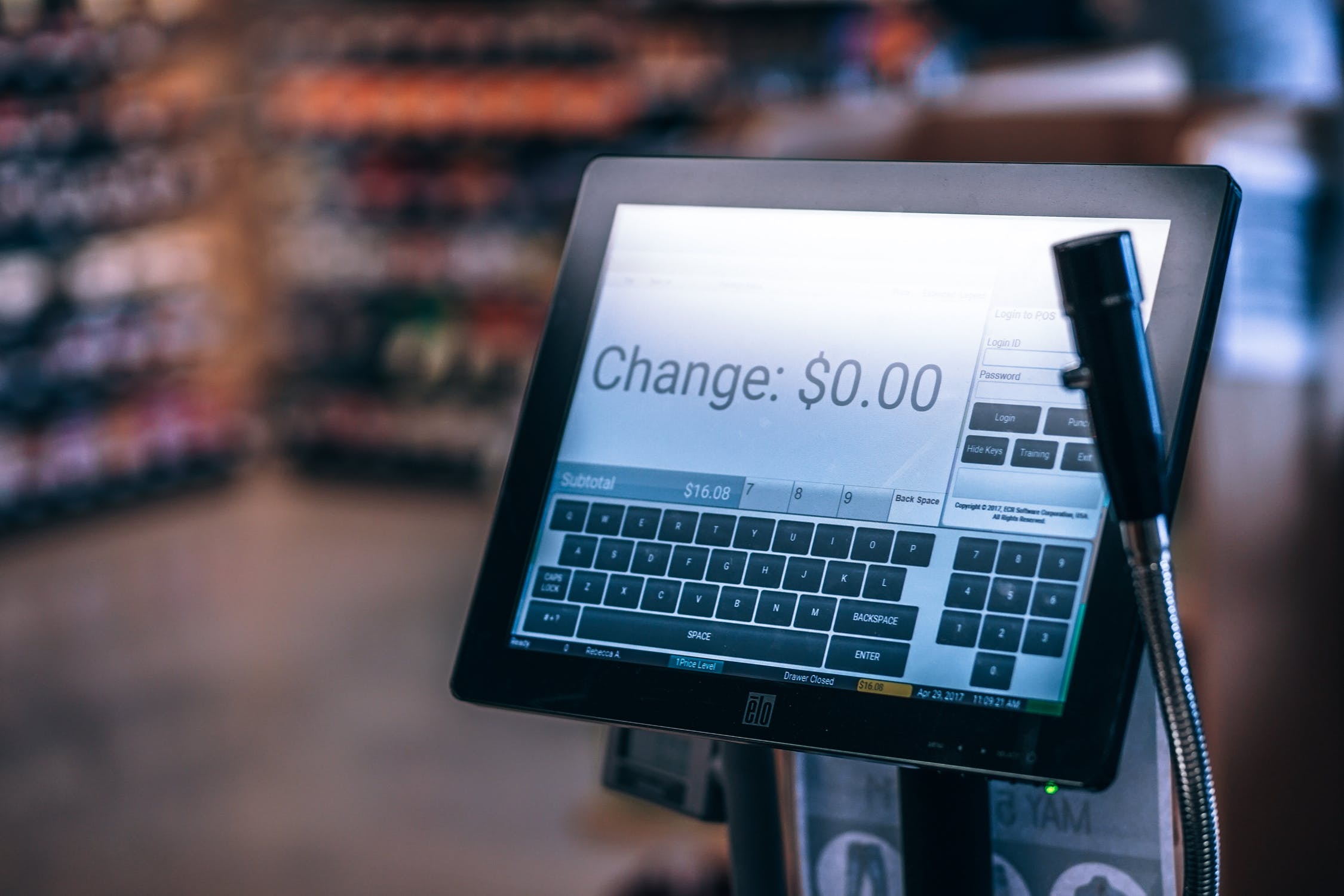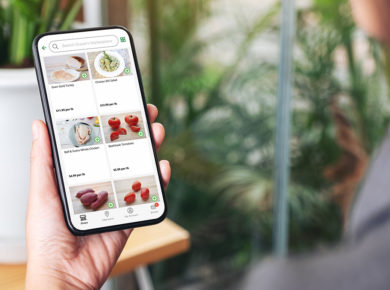With increasing technology available for food merchants and businesses, there are many ways to streamline store operations. As traditional cash registers are falling out of use, small businesses are adopting iPad cash registers.
iPad cash registers run on point-of-sale (POS) systems, leveraging Apple’s iOS software and app technology to create useful equipment for merchants and store owners. POS apps provide businesses with a variety of tools that record transactions, track inventory and give detailed analytics. Whether a customer pays with cash, card or gift card, iPad cash registers can process a variety of transaction types. Many businesses are choosing to go “cash-free”. From SquarePoint to GoPayment, there are apps available to suit any merchant.
Steps to Use iPad POS Software
- Research and select which point of sale app is best for your shop
- After downloading the app, input the requested information (products/inventory list, tax rates, and receipt header).
- Set up the card reader, cash drawer and any other hardware you may need.
There are guides available online to walk you through each step if you need support. Don’t be shy to contact customer experience and service teams if you have questions or need help. You can also find the answers to many trouble-shooting problems online. If you are having a tech issue, the chances are, someone has asked the same question about it before.
Advantages of using an iPad cash register
A recent survey by software review site Capterra revealed that iPads are the preferred mPOS device for businesses. Review site Merchant Maverick compiled a list of iPad cash register benefits. Here are some of the benefits that stood out.
Ease of Use
iPads are known for having a user-friendly interface. Simple and straightforward, shop owners and cashiers can learn the ins and outs of the software in no time. One reviewer of the Amber POS app for iPad said, “Training is really pretty easy with the younger, more tech-savvy generation. Most employees learn with about 10 or 15 minutes of training.”
Security
Data breaches and credit card fraud can be a nightmare. Often, POS apps encrypt credit card data and the data isn’t stored on the iPad. Furthermore, iOS is incredibly secure. To be extra safe, passcodes and timed-out sessions after incorrect passwords can be implemented to increase security.
Engagement and Tracking Tools
Most iPad POS systems offer features that traditional POS systems simply can’t. With the iPad, users can track inventory, integrate shopping, order directly from restaurants, and toggle with customer engagement tools. Since many features are integrated into one central place, the system can generate in-depth reports for your business too.
Cost Savings
Some traditional POS systems can cost thousands, but basic iPads on Apple’s site start at a mere $329. One small business owner calculated that she saved over $10,000 by switching to an iPad POS system. She told CNBC about her experience, “For a small company like us where $10,000 makes a huge difference, that was a key differentiator.”
Disadvantages of iPad Point of Sale systems
Despite the benefits of iPad cash registers, there are a few caveats that small business owners and grocery stores should be aware of.
POS apps are new
The software is constantly being updated. There are always new standards and new bugs, both of which require software updates. Updating your iPad may mean that you have to wait for your app to become compatible again and since Apple has to approve all updates, this could take some time. However, this is not a large impediment or insurmountable obstacle.
WiFi requirement
Don’t have Wifi? Well, you need it. All POS apps require an internet connection. If your iPad loses connection, you won’t be able to print receipts or may have trouble with the cash drawer.
Potential Costs
Most apps are free to download but incur transaction costs and monthly fees. WiFi isn’t free either. Breaking an iPad will set you back a minimum of a few hundred dollars. The iPad’s swivel stand, cash drawer, credit card reader, and countertop receipt printer have to be taken into account too.
How do traditional POS systems compare?
One thing to keep in mind is that POS software prices differ based on the needs of your business. However, iPad POS Systems tend to be the same.
This chart also shows how much the hardware would cost and software for traditional POS system, based on how high end your company is.
If you’re a new business owner at a specialty food store or a natural food store you would be looking at a total of $1,400 for the first year with software payments included.
Which POS system to purchase?
The goals and budget of each vendor varies. To help, Mercato developed a guide for identifying options for point of sale systems.






